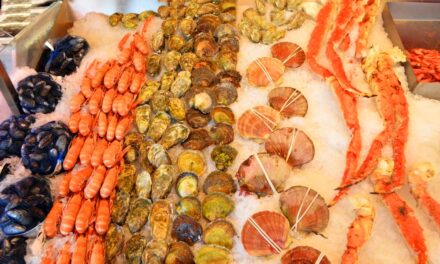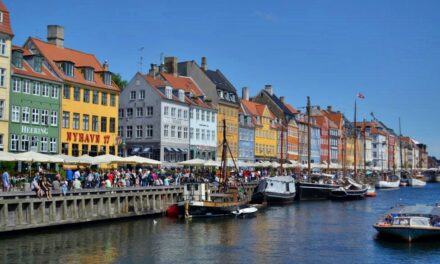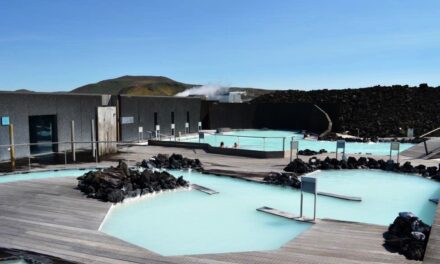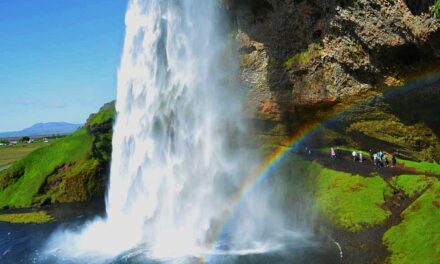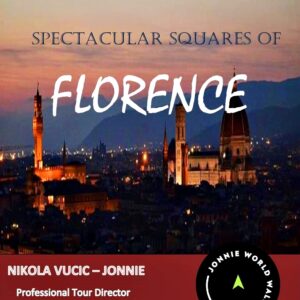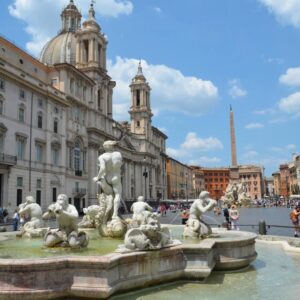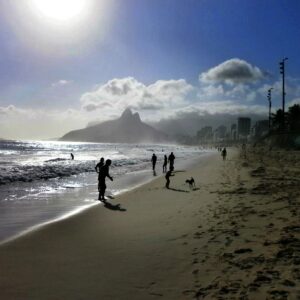Day stroll through Reykjavik
Reykjavik proudly stands as the capital of Iceland, keeping its cultural heritage, tradition and history. This is a place where everything is accepted with smile and kindness, where mythology meets modernity, overlooked by the glaciers, ocean and volcanoes…
Iceland, with its supernatural landscapes, history and tradition, is something to be explored. To impress visitors, every country presents its tough race between cultural heritage and natural wonders. In Iceland, creations of the mother nature takes all the glory, while intriguing mythology, tradition and food, complete a puzzle of this mysterious land, in the middle of the North Sea.
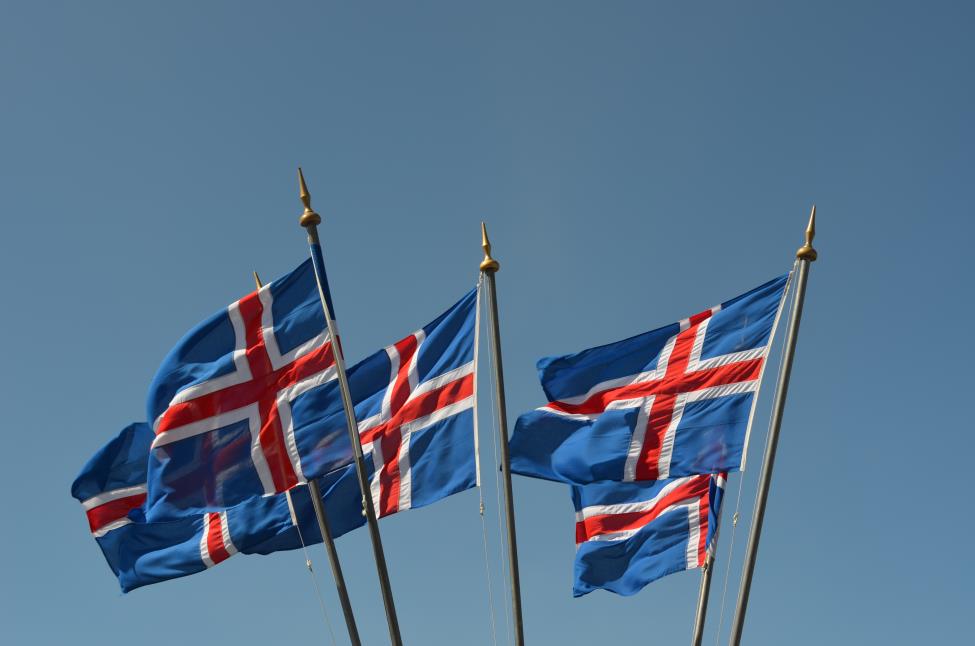
Icelandic flags and Icelandic wind
Wherever you look, one thing is evident: Iceland was formed by the forces of submarine eruptions 70 million years ago. They shaped the entire the island in a spectacular way. Located in the middle of the North Atlantic Rift, Iceland is a meeting point of North American and Euro-Asian tectonic plates. Constant activity of the volcanoes, never stop to remind us on geological origin of the island. City of Reykjavik stands, not only as its proud capital, but also as world’s northernmost capital. Moreover, it is way closer to Greenland, than to any other part of Continental Europe.
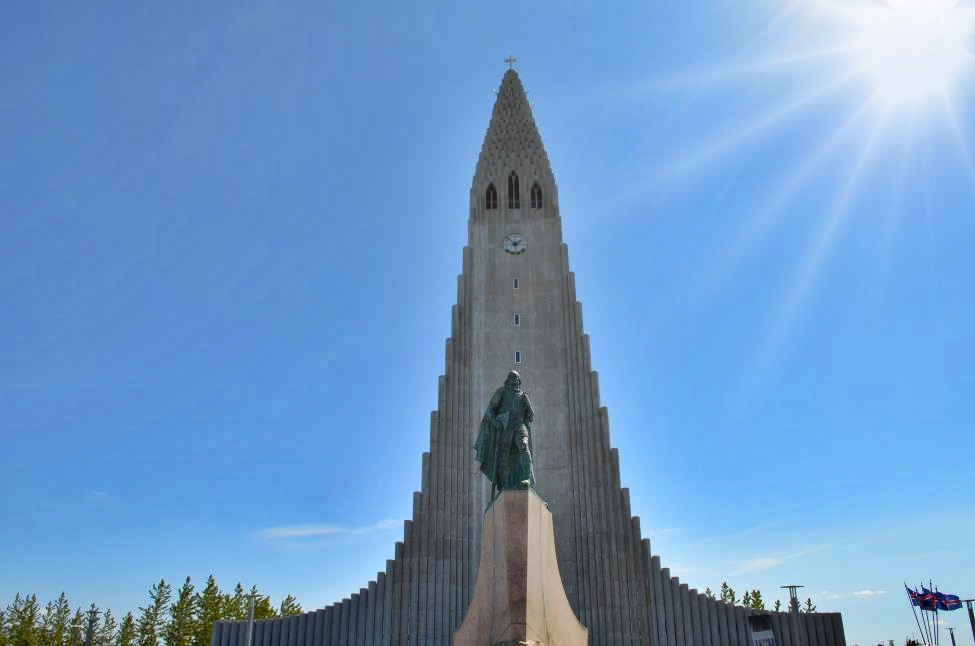
Explorer Leif Erikson and iconic Halgrimskirkja, Reykjavik
“Warm” welcome to Reykjavik
No matter how cold it sounds, reality is that winters in Iceland are as cold, as in New York City. The only difference is that Reykjavik, with its tiny population of 130.000, represents two thirds of total population in Iceland. Reaching that remote land always causes excitement. This is exactly what happened when I landed to Reykjavik in June 2019. My luggage, with all cold weather equipment, was lost during London layover. I was left with European summer outfit and short sleeves. That was just nothing compared with Iceland’s strong wind and close to zero temperature (32°F). That “warm” welcome to Reykjavik just increased my excitement. If I want to be a real Icelander, I need to pretend that even freezing was a pleasant feeling. First thing next morning and I was in a winter clothes store, buying some warm staff. Finally, and I was so ready and motivated to discover Reykjavik.
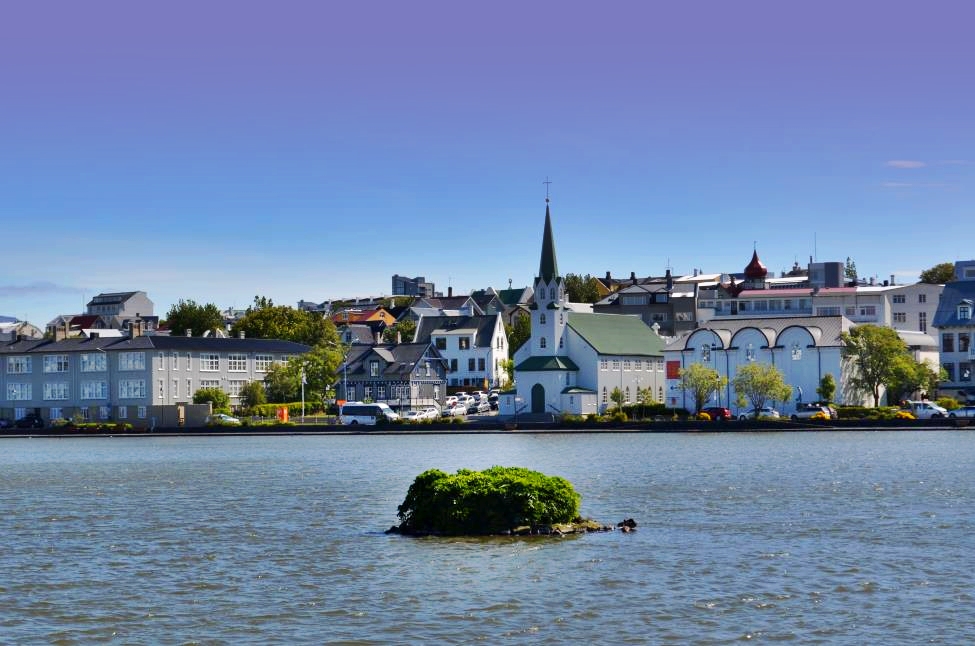
Beauty of Tjornin (the lake), Reykjavik
Historic tale of reyjkjavik
Main source to explain how everything started in Iceland, is famous Landamabok or “The Book of Settlements” from late XI and early XII century. It gives an insight of the first permanent settlers in 874 AD. While sailing from Norway, seafarer Ingolfur Arnarson saw some steam, rising from a hot spring and named it “The Smoky Bay” or Reykjavik. Influenced by fascinating Norse mythology, Iceland was not an easy country to convert to Christianity, which occurred during early 1000s by the brave King Olaf Tryggvason. Norwegian domination paved the road to Kalmar Union, when Denmark, Sweden and Norway became main colonial powers of the north. They extensively used Icelandic goods and manpower, to develop their trade routes and wealth. XVI century Reykjavik saw religious turn from Christianity to Lutheranism. It became the official state religion, until “religious freedom era” of the mid – 1800s. Real “Father of Reykjavik” – Skuli Magnusson introduced wool production to modernize Icelandic economy in the late XVIII century. It seems that “on the back of a sheep”, Reykjavik entered serious urban development. It became the only real city in Iceland, seat of the parliament, and finally, in 1944., the capital of the country.
Walking through Reykjavik
I wished to walk through every historical period of Reykjavik. Decision was made to start from the coastline, exploring how unpredicted nature of the ocean shaped the face of this city. And there, just next to the sea promenade, The Sun Voyager was proudly shining. This modern, stainless steel version of a Viking ship was designed by Jon Gunnar Arnason in 1990. It strongly symbolizes Vikings past, and heritage of the Icelanders. Today, this is one of the city’s landmarks with a deep and profound design message. This ship represents a dream of hope, progress and freedom, and ode to the sun, leading it to the eternity.
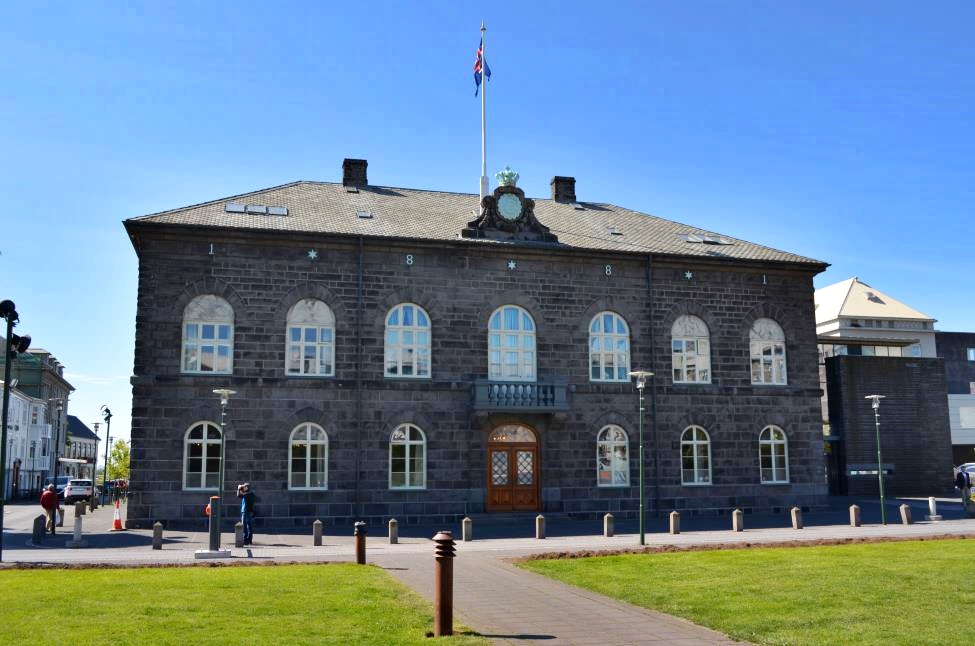
Parliament of Iceland
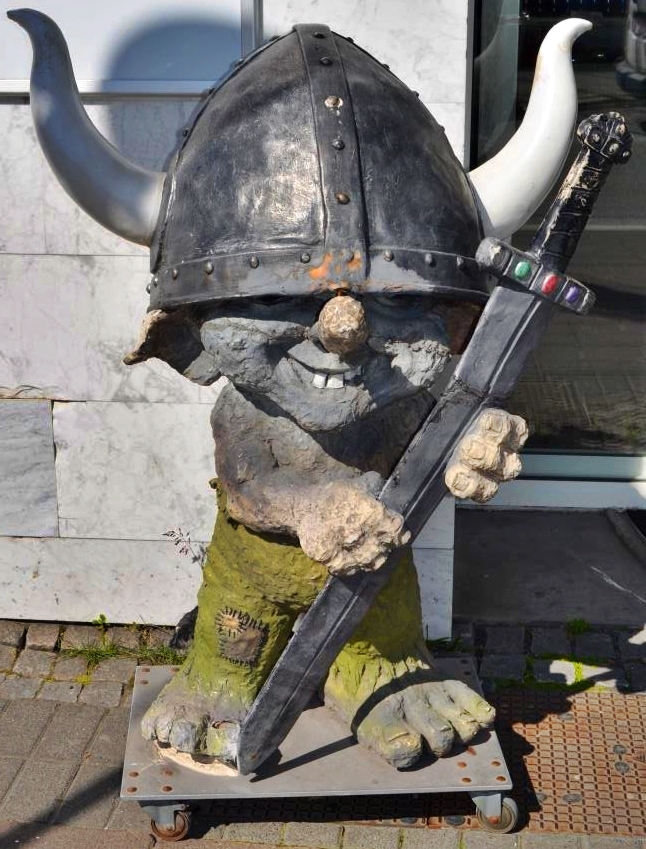
Icelandic Viking Troll
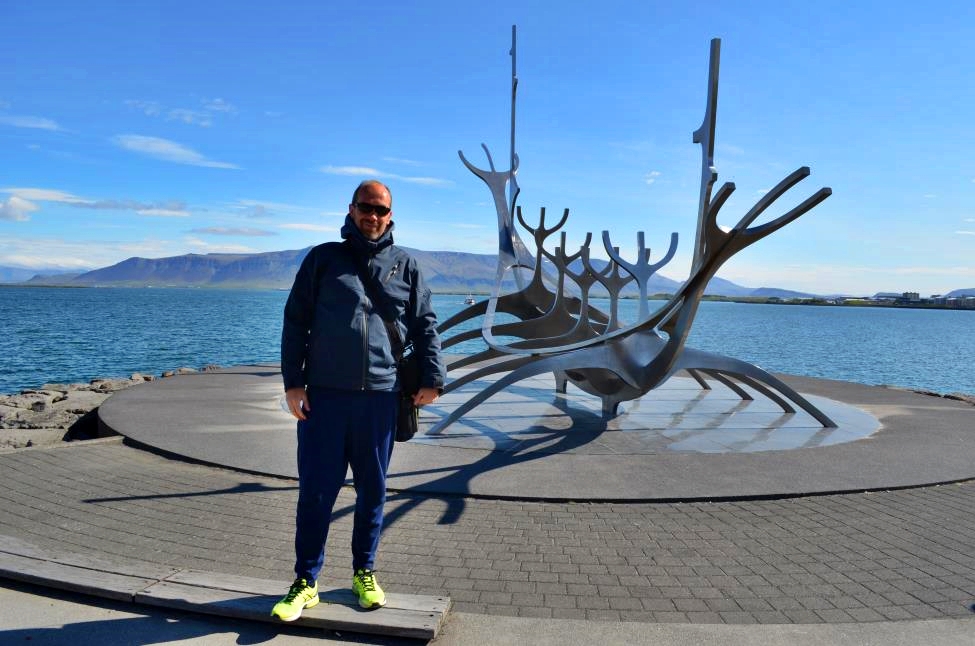
The Sun Voyager Monument, Reykjavik
Only ten minutes walk down the coastal walkway, with some Icelandic wind coming to greet you, will bring you to the most futuristic piece of cityscape architecture – The Harpa. Initially, it was planned to be a part of immense World Trade Center of Reykjavik. However, due to financial crisis, this structure ended up alone, with its impressive steel framework covered with glass panels.
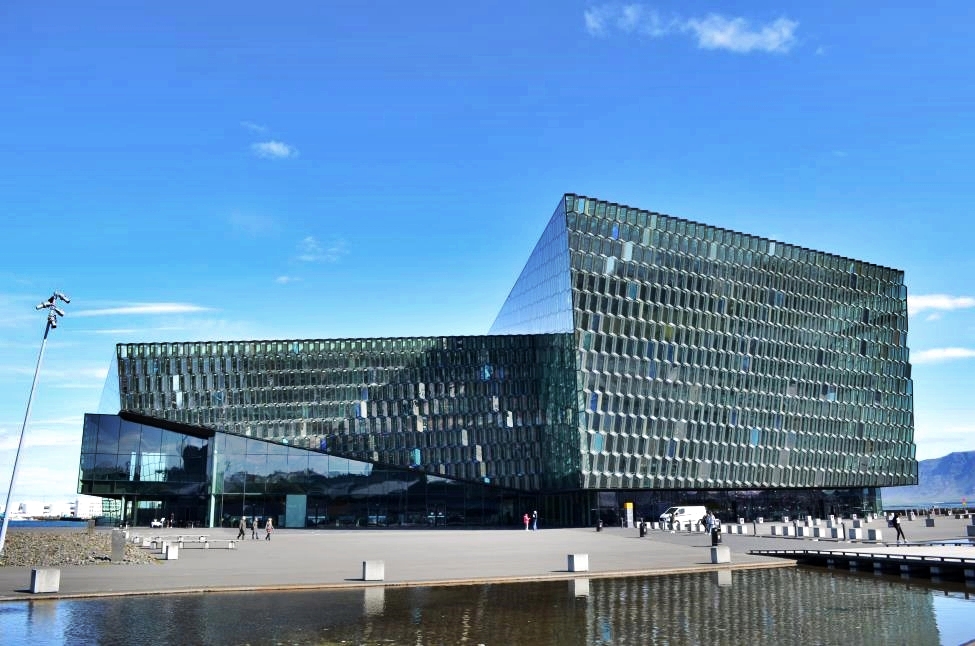
The Harpa Opera House, Reykjavik
Total costs of 177 million USD were covered. It was finally opened in 2011. to house Icelandic Opera and National Symphonic Orchestra. Harpa’s fabulous acoustics and average ticket price of 100$, are fair enough for a memorable experience. Behind the Opera House stands the Old Port, with eastern pier full of souvenir shops, restaurants and fresh air, mixed with smell of sea salt. This is where you can feel real vibe of Reykjavik. If your time allows, choose between two marvelous museums of the Old Port.
Video: Explorer Leif Erikson and iconic Halgrimskirkja, Reykjavik
Saga museum, with it’s life size wax statues describes the earliest part of Icelandic history. Whales of Iceland Exhibition is where every visitor dives into the world of whales and deep blue ocean, in a highly interactive way. If you are thinking of a short break, or even a lunch, city district next the Old Port is a perfect choice. It will amaze you with layout of streets and squares, old and more authentic architecture, and great variety of local food.
Delicious flavors of reykjavik

soup in bread Reykjavik
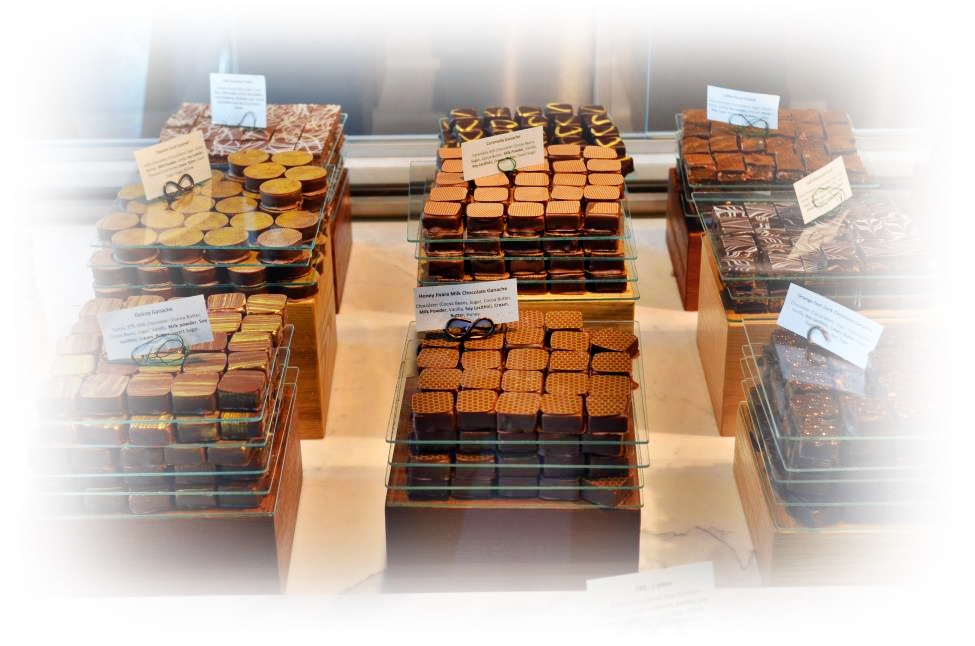
Delicious cookies, Reykjavik
Fish Company Restaurant is, for sure, one of the most enjoyable places for lunch. Tasty lobster soup, super fresh catch of the day with side dish and a nice caramel tart, will cost you around 55.00$. A few minutes away is Messin Restaurant, with delicious arctic char prepared with almonds, cherry tomatoes, butter and lemon. Taste highly traditional plokkfiskur or “plucked fish” – dish where potatoes, onions, bechamel sauce and fish, are mixed in way you will never forget. Some quick bites are practical and very popular in Reykjavik. Try not to miss Rugbraud – rye bread topped with smoked salmon and cream cheese. Just imagine when this delicacy is served with ice cream, extra creamy butter, and crunchy lava salt, creating unforgettable taste of wild nature. If you eventually miss your hot dog, Reykjavik has something even better – Pylsur – Icelandic hot dog made of mixed beef, lamb and pork.
Saying “Eina med ollu” (one with everything) will bring you the biggest hot dog pleasure. It’s like 60 years ago, when fried and raw onions, sweet brown mustard, and creamy remoulade, made Pylsur’s history. After a typical Icelandic meal, who can resist perfectly cool, strong lager, Viking Gold beer. Today it’s so easy to drink it, but until March 1989., beer was illegal in Iceland. To find a way to warm themselves with beer, and made it legal, Icelanders came up with low alcohol content beer, mixed with vodka. That is how Bjorliki drink was born, as one of the most popular around the country. Maybe a shot of Brennivin unsweetened schnapps would be fine, or just a sip of Isafold Gin, but always be responsible when drinking in Iceland, no matter how cold it is outside.
more city treasures to explore
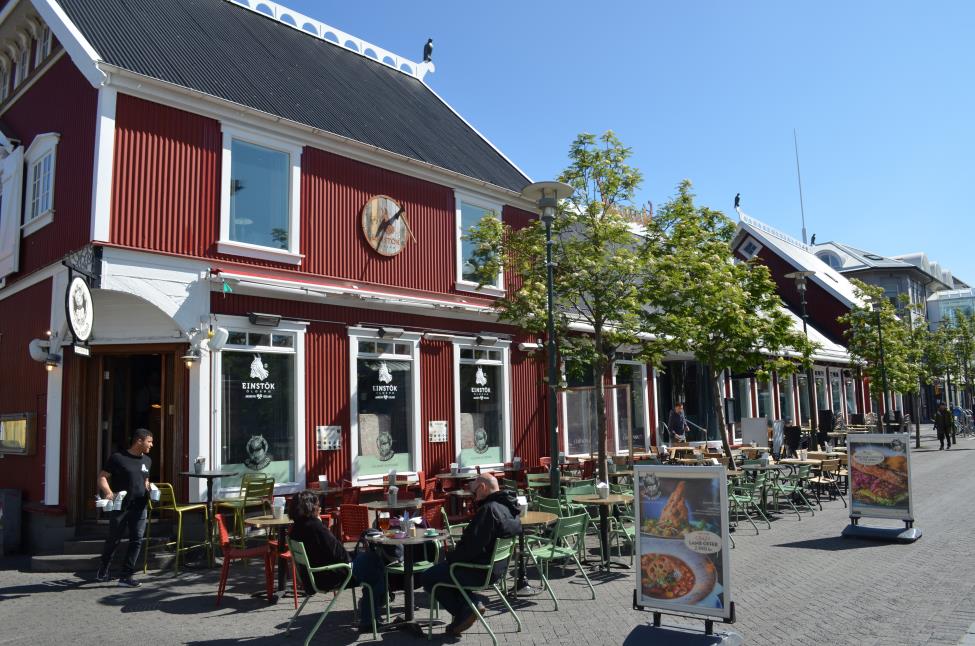
Lunch break next to the Old Port
After experiencing Icelandic culinary palette, more walking is a must, so lets reach the heart of the city. Austurvollur square is where historic protests and celebrations took place. In the middle is a statue of Jon Sigurdsson – “father” of Icelandic independence. He was the president of the Icelandic Literature Society in Copenhagen in XIX century, while his brilliant diplomacy paved the road to final independence from Denmark.
Just across the square stands an institution, that every Icelander is so proud of – the Parliament or Althingi (Assembly of all). Founded during Viking era, in 930. it is considered the longest continuously existing parliament in the world. Such a modest building, for such an immense importance. Please consider it as the Icelandic, modest, no show off way of presenting things. Just next to the Parliament is the oldest church, Evangelical Lutheran Cathedral of Reykjavik, from 1796. If you prefer something modern, explore futuristic design of 1992. New City Hall.
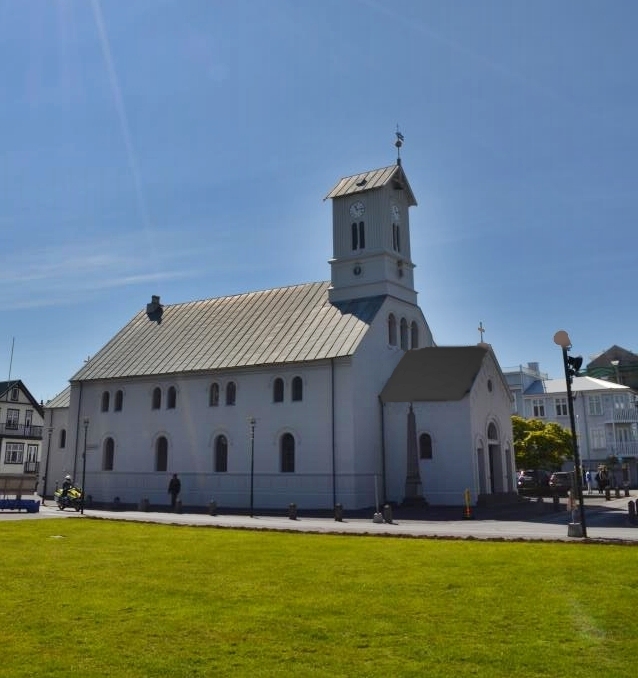
Evangelical Lutheran Cathedral of Reykjavik

Thor motive on the window in Reykjavik
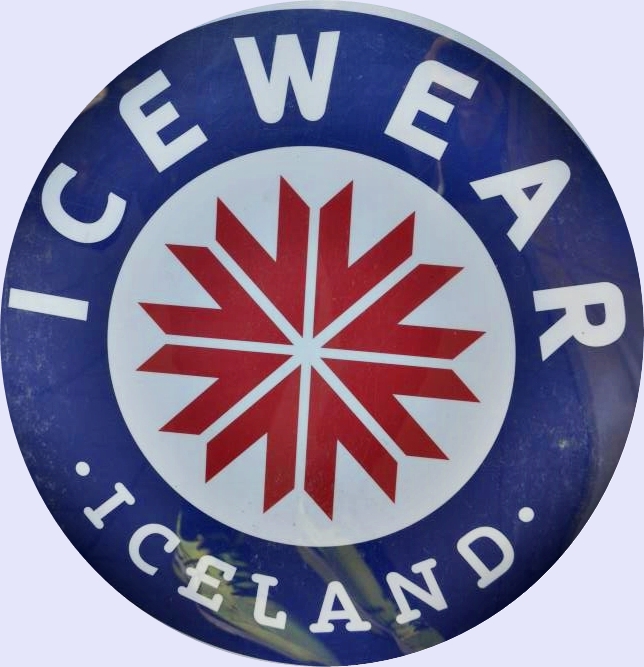
Icewear clothes brand of Iceland
After this great diversity of architecture and politics, just relax overlooking famous Tjornin or “the lake”. What a gentle water paradise in the centre of Reykjavik. This was my favourite area to do jogging every morning, with a light breeze and summer sunshine. Visitors are truly excited to see over 40 types of birds, specially seagulls, gadwalls, arctic terns and swans all around the lake. By feeding them, they usually make this lake “the biggest bread soup in the world”. Winter time on Tjornin turns part of the lake into an ice skating arena, while small part is defrost for the birds, by pumping in hot, geothermal waters. Expensive private houses, University of Reykjavik, National Gallery of Iceland and National Museum of Iceland line up around the favorite city lake. From there, easy five minute walk, brings you to Laugavegur Street. It was named after “wash” or “water road”, where women used to pass with their laundry, to wash it in geothermal ponds during XIX century.
New street pavement during 1880s coincided with a number of new businesses and a few local cafes. Slowly, it grown into a prime dynamic street of Reykjavik. Today, strolling more than a mile long street, you can feel an old spirit of XIX century progress, combined with numerous souvenir shops. Local and international restaurants are all around, plus numerous bars, pubs and superb outdoors equipment stores. One can find absolutely everything here: from wool and fir coats and Viking armory to statuettes of Norse mythology Gods Odin, Frigg, Thor or Freyja. Even polar teddy bears are here, mostly because of tourists. Icelanders mostly do not care at about those white puppets, simply because polar bears do not exist in Iceland. Smiley faces of locals are everywhere and you can feel the highest level of kindness on every step. Young parents could be seen quite often, even during winter time, leaving their baby to take a nap outside in a baby stroller, while they are enjoying a cup of tea or coffee in a bar. To me, it seemed like they start with famous Icelandic “strongmen tradition” from the early stage.
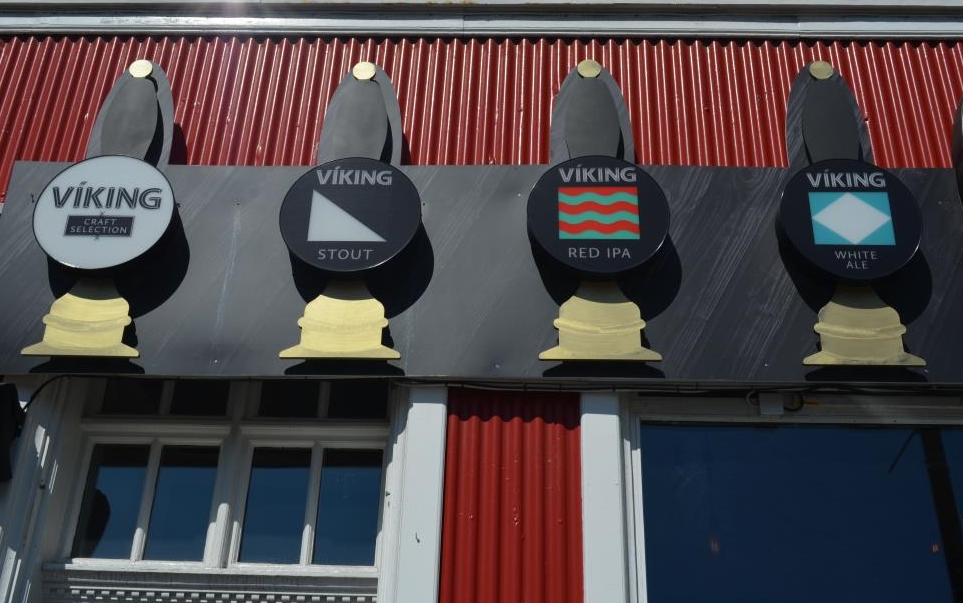
Beer choice in Reykjakvik
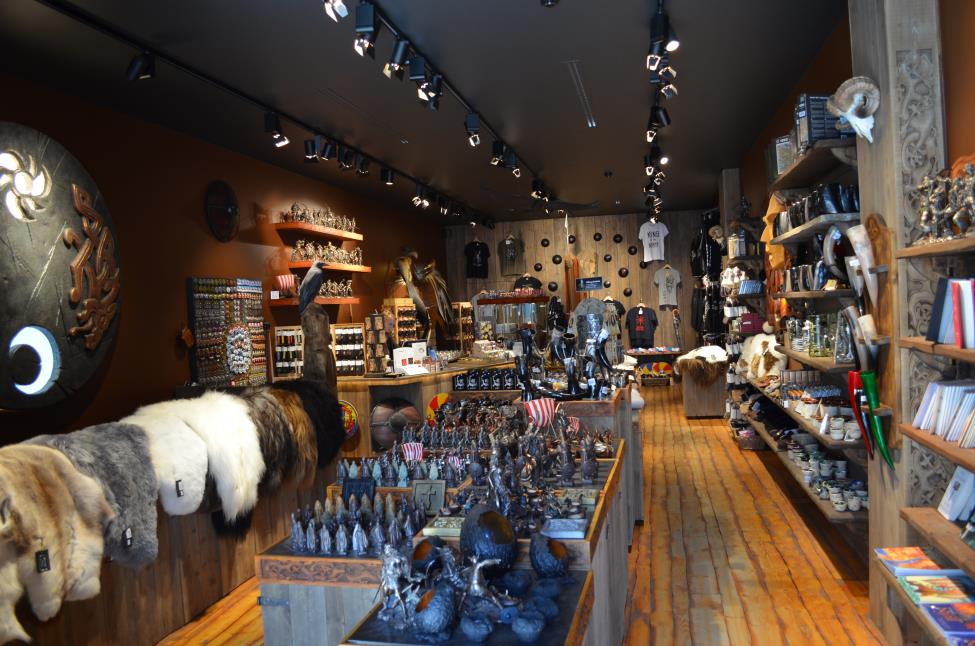
Souvenir shop in Reykjavik
Sometimes people are curious to explore Mammal Phallic Museum and Icelandic Punk Museum, adding some unique educational experiences in Laugavegur street. To find some peace by the end of the day in Reykjavik walk ten minutes from this busy street, slightly uphill to reach one of the most unusual architecture of a church you’ve ever seen. Halgrimskirkja dominates the skyline of Reykjavik with its 74.5m (244ft) high bell tower, visible from any corner of the city. This Lutheran church strikes with distinctive architecture, inspired by the shapes of lava cooling into a basalt rock and glacier’s scars on the mountain slopes. Completed in 1986., it serves not only as a church , but as a symbolic temple, dedicated to Hallgrimur Petrusson . This famous XVII century poet, brilliantly wrote 50 poetic texts on Christ’s passion, today known as passion hymns.
Vast and acoustic interior of the church includes 25 tons, gigantic organs with 5275 pipes, magically contributing to a holy mass. Outside, on a spacious square, adorned with Icelandic national flags, stands a monument to another hero, whose name is often hidden among historical notes. Here, in Iceland, Leif Erikson will never be forgotten. His epic expedition across the Atlantic in 1000. secured him the eternal glory. He became the first European to have set foot on the Continental North America, somewhere around the Gulf of St.Lawrence. Standing next to the Leif Erikson’s statue, with monumental Halgrim’s Church behind me, I totally understood Icelanders. I valued so much their ability to survive, walking hand in hand with the powers of nature, their intriguing culture and tradition, motivation to explore without affecting others, their purified soul and smile that disarms instantly.
By the end of the day, feeling of deep admiration for the Icelandic nation, beautiful sunset and absolute fulfillment were so overwhelming. Reykjavik, thanks endlessly for another chapter of discovering you.
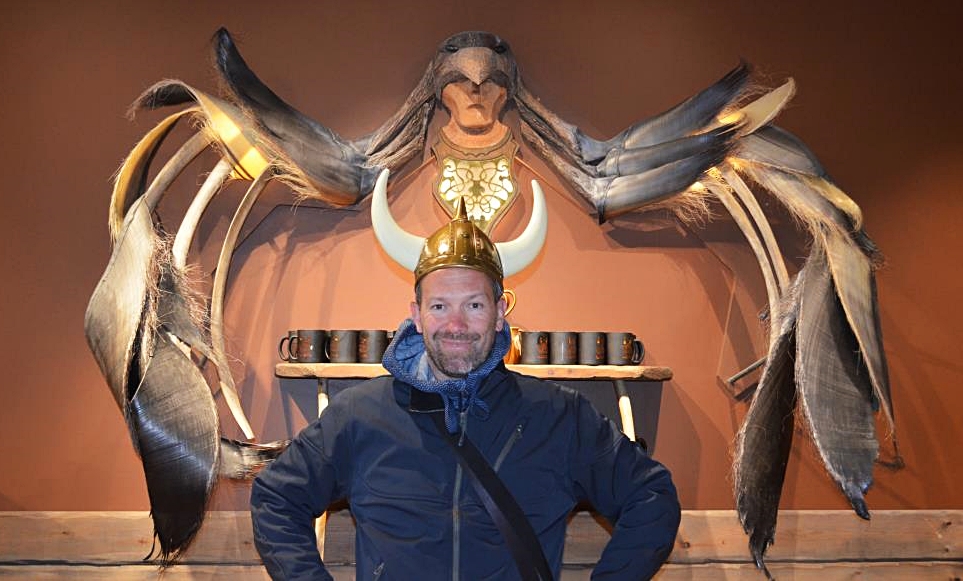
Travel Authentic. Live Inspired.
Among Vikings and Norse Mythology, Reykjavik
Notice: article images are made by Jonnie World Walker team.
Ready to explore more?
♣
For the New Year’s Eve, distant and mysterious Reykjavik shows all its colors and lights combined with spectacular fireworks. Enjoy this amazing coverage of Reykjavik brought to you by That Icelandic Guy YouTube Channel.
♣
You can easily rely on this website, whenever checking all fascinating details about Reykjavik. The very best of Icelandic capital is here just for you. Conect to https://visitreykjavik.is/

